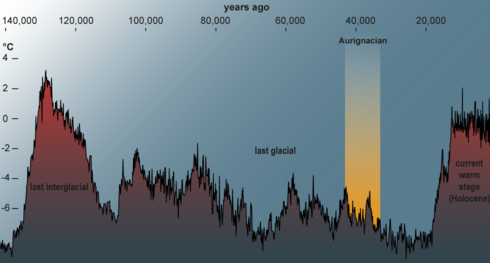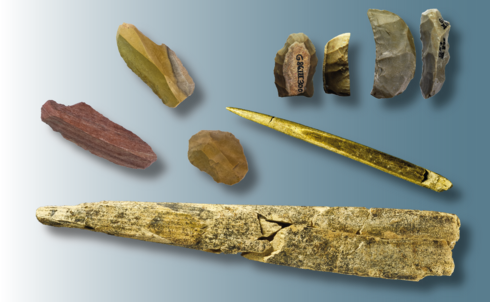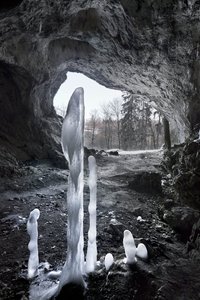Life during the Ice Age
At the time the art objects from the caves in the Swabian Jura were made, the landscape of central Europe looked very different to what it is today. 40,000 years ago the world was in the Ice Age! During the late Pleistocene - as researchers call this period - the Swabian Jura was a steppe and tundra landscape which was home to Ice Age animals like mammoths, reindeers or cave bears.

Up and down - Ice Age climate!
The glacial period in which the hunter-gatherers of the Aurignacian lived in central Europe is the so-called Wurm Glaciation (referred to as the Weichsel Ice Age in northern Europe). This Wurm Glaciation was the last glacial period of the Pleistocene. It began about 115,000 years ago and ended about 11,600 years ago with the beginning of the Holocene, the warm period in which we still live today. Ice cores from Greenland and the Antarctic show that strong climatic fluctuations characterised this last glacial period. Even when there were comparatively milder phases (so-called interstadials), it was still significantly colder overall than today. The glaciers extended down beyond the Alps, so that for example the area of today’s Lake Constance was under ice at that time.

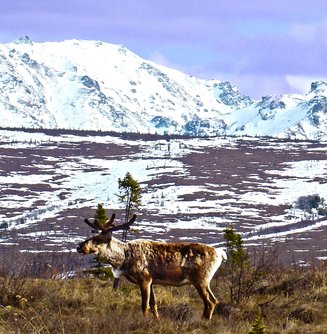
Steppe and tundra - mammoth and reindeer
The world of flora and fauna was an entirely different situation compared to today. There was no extended forest coverage as we know it today. Only during the mild phases did the pinewood and birch forests of central Europe expand. During the glacial periods, there was an extended steppe and tundra landscape only with sparse “islands of trees”. This special ice age landscape is frequently referred to as the Eurasian Mammoth Steppe, since ice age herd (gregarious) animals grazed here. There is no longer a landscape of this sort today.
Large animals lived in central Europe during the Wurm glaciation that were adapted to the steppe-like environment such as mammoth, woolly rhinoceros, reindeer, giant deer, steppe bison and horses. By the same token, there was a plethora of predatory animals such as the cave lion, cave hyena, wolf and polar fox. Added to this list would be the cave bear, which according to the zoological system was indeed a predator, but in reality was a pure herbivore.
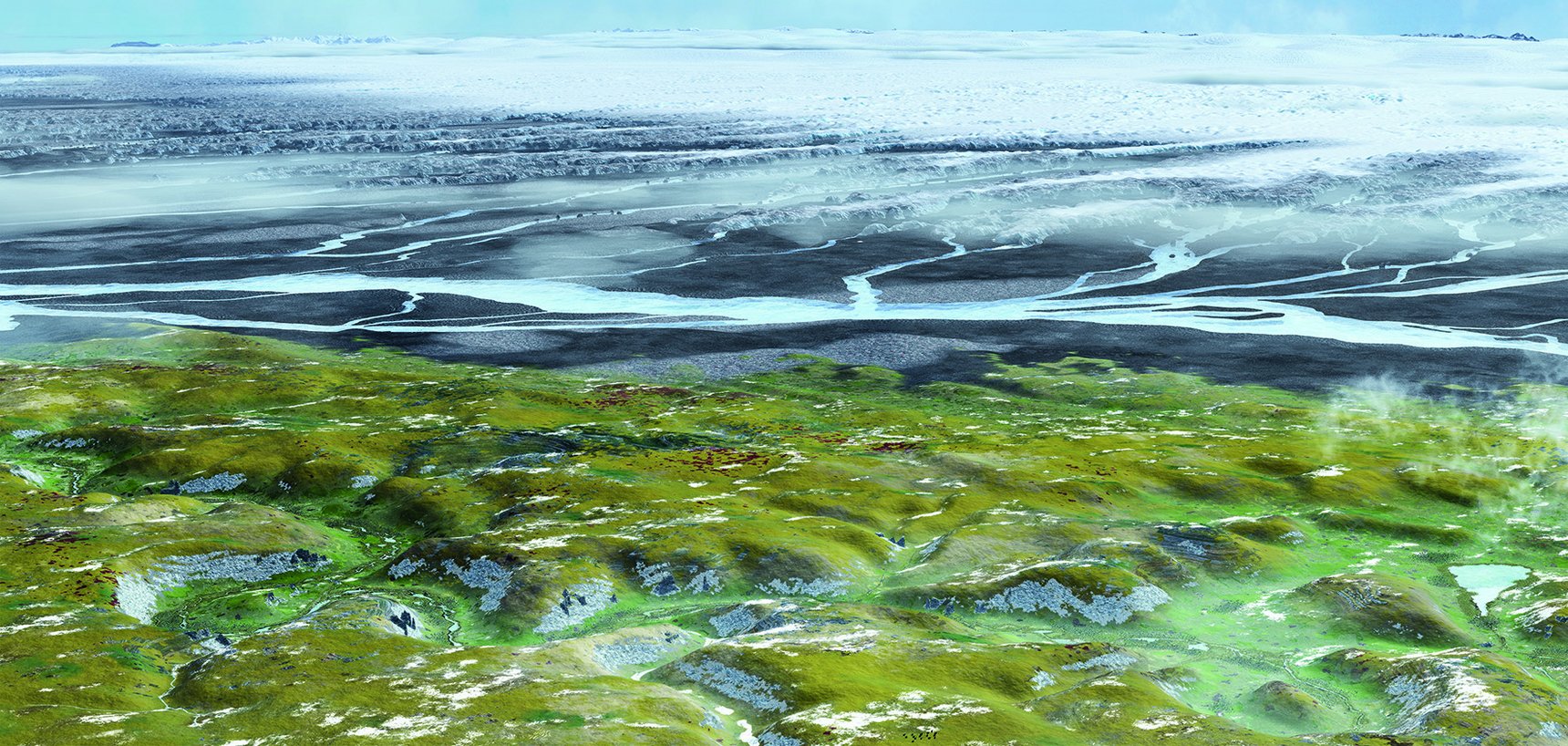

Palaeolithic hunters and gatherers
People of the Ice Age lived as non-sedentary hunter-gatherers. Their numerous remains, discovered by archaeologist not only in caves in the Swabian Jura but at many sites all over Europe, are assigned to the so-called Palaeolithic - the Old Stone Age.
The derivation Stone Age indicates that the majority of tools preserved from that time consist of those made of stone. In addition, there are tools made of bone, antler and ivory as well as food remains in the form of bone of the prey hunted by humans. All these artefacts give us detailed insights into the life of Ice Age people.
With and without a roof - Ice Age settlement patterns
Archaeological finds from the Palaeolithic are always embedded in a regional settlement pattern which may change by season. Most similar to these Palaeolithic hunter-gatherer groups would be arctic and subarctic indigenous peoples. From them we know that different campsites can have entirely different functions. Accordingly, Pleistocene archaeological sites can also be allocated to certain categories of campsites. These are differentiated as regards the activities that took place and the duration of occupation. This includes for instance so-called base camps that have been used over long periods of time – weeks or even months – by a hunter-gatherer group, or “aggregation sites” that have been frequented by several groups specifically for major events such as a joint hunt. Besides this there were temporarily occupied camps, for example hunting campsites, in which only a few people made a stopover during individual hunting events.
The combination of several “simultaneously” (i.e. within the same chronological stage) occupied archaeological sites can result in an impression of a Pleistocene land use system. Even if the complete repertoire of distinguishable “site types” is missing from a certain region, hunter-gatherer archaeological sites must always be seen in the context of such a (albeit unknown) settlement system of highly mobile hunters and gatherers.
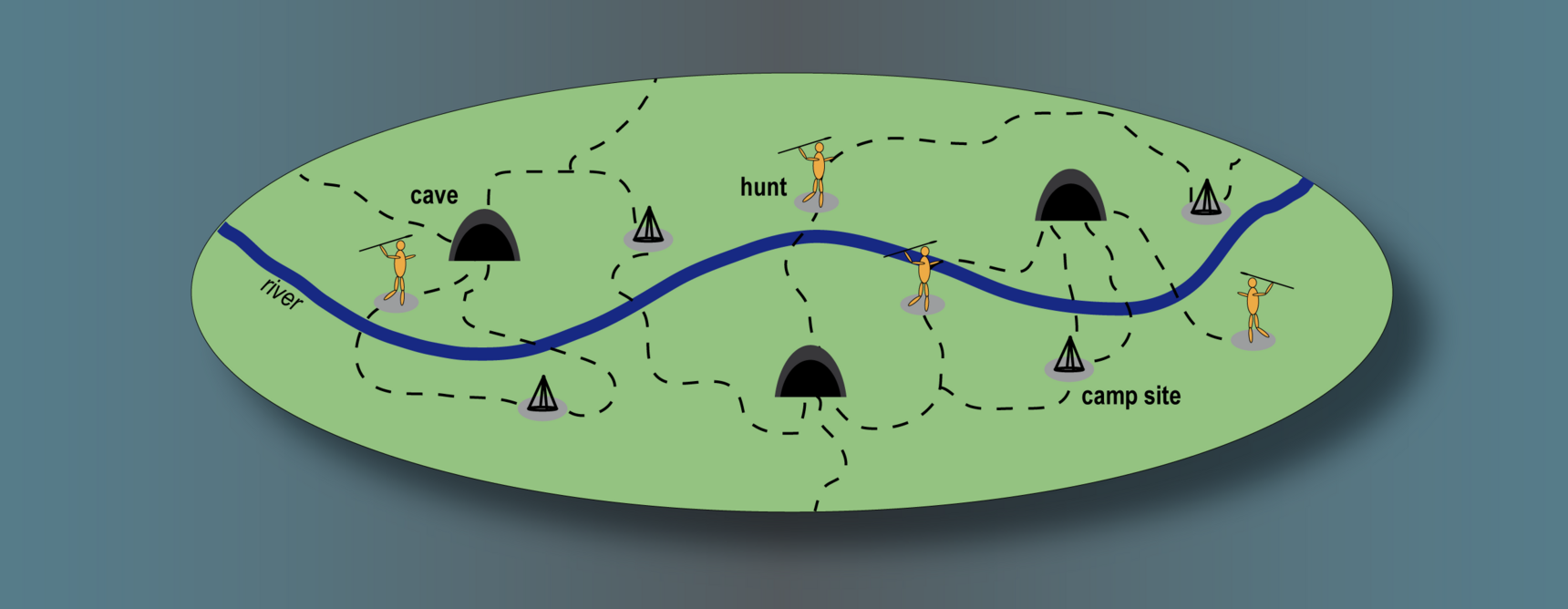
The caves in the centre
The rich spectrum of archaeological discoveries from the caves in the Ach and Lone Valleys indicates the central position of these sites within the settlement pattern of Pleistocene humans. Alongside the daily hunting and gathering, the people produced artistic objects and made music in their caves. These activities – as opposed to pure securing of subsistence – are to be counted among the categories of belief and cult, or to be viewed perhaps as simple ”leisure activities”. In any case, these spheres of life are usually not verifiable in the context of transient campsites such as pure hunting camps for a small group of hunters. They are more likely a component of base camps or other (e.g. religious) locations of outstanding significance. Even though the individual occupations of the respective caves tended to be quite differentiated, they were certainly central sites in the context of larger settlement systems.




